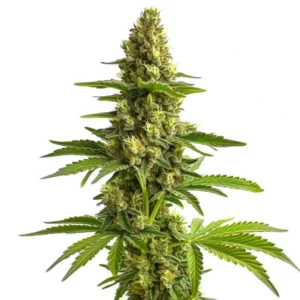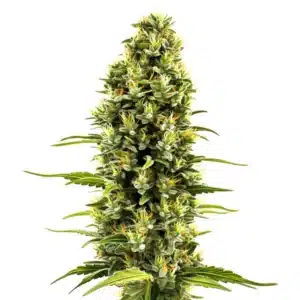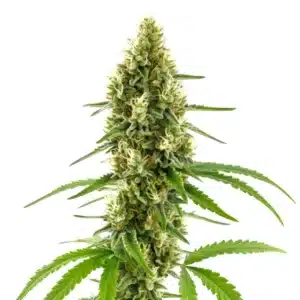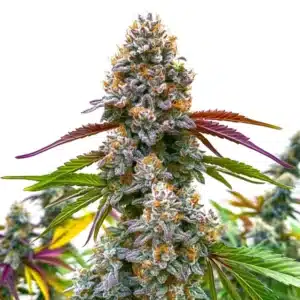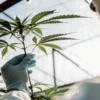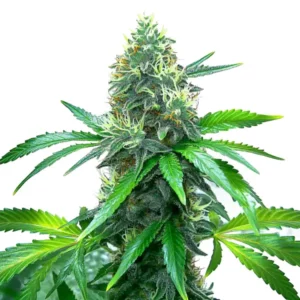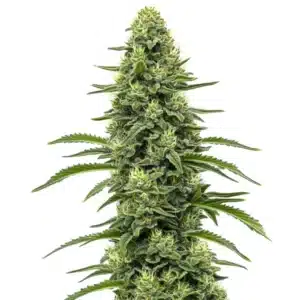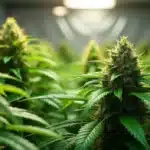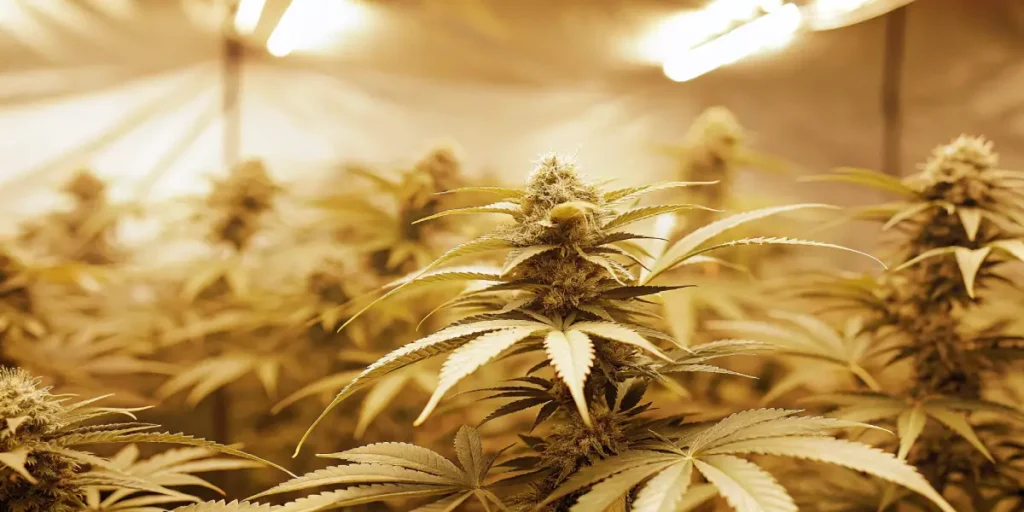
Glossary of Cannabis Photoreceptor Terms
Cannabis cultivation is more than just planting seeds and watching them grow. An essential component to successful cannabis growth is understanding the plant’s light requirements. The Glossary of Cannabis Photoreceptor Terms sheds light on the complex interaction between cannabis plants and light, essential for both novice and seasoned growers.
Photoreceptors in cannabis play a critical role in how the plant responds to light. They influence everything from germination to flowering. Without these receptors, plants wouldn’t know when to grow tall or bloom. The glossary of cannabis light terminology helps clarify these processes.
Recommended Strains
Bruce Banner #3
|
|
THC | 20% - 29% (High) |
|
|
Type | Feminized |
|
|
Yield | Medium |
|
|
Phenotype | 50% Indica / 50% Sativa |
GG4
|
|
THC | 27% (High) |
|
|
Type | Feminized |
|
|
Yield | High |
|
|
Phenotype | 40% Indica / 60% Sativa |
Terms like phytochromes and cryptochromes might sound intimidating, but they’re key players in light detection. When armed with cannabis photoreceptor glossary terms, growers can optimize light conditions to boost plant health and yield. It’s about turning technical jargon into actionable knowledge.
Phytochromes and Their Role
Phytochromes are light receptors that detect red and far-red light. They act like the plant’s internal clock, helping it determine day length and seasonal changes. Phytochromes play a vital role in triggering flowering in cannabis, especially for strains like Bruce Banner 3 from Blimburn Seeds.
These receptors are sensitive to the red spectrum of light, which influences the plant’s life cycle. For instance, when phytochromes detect longer nights, they signal the plant to start flowering. This is crucial for photoperiod strains that depend on light cycles to bloom efficiently.
The Glossary of Cannabis Photoreceptor Terms provides a comprehensive look at how phytochromes operate within the plant, explaining their importance in adapting to environmental light changes. Knowing cannabis light receptors through this glossary equips growers with the knowledge to tweak light schedules, ensuring plants transition smoothly through their life stages.
Cannabis photoreceptor function explained through the lens of phytochromes highlights their impact on plant physiology. These receptors are not only pivotal for flowering but also for seed germination and elongation growth. By mastering the timing of light exposure, growers can effectively manage plant height and flower density, optimizing the overall health of the crop.
Cannabis Strains and Phytochromes
Certain cannabis strains rely heavily on phytochromes. The Bruce Banner 3 strain, known for its potency, flourishes under optimal red light conditions. By knowing cannabis light receptors, growers can manipulate light exposure to enhance growth phases and maximize yields.
Photoreceptor function explained simply: think of phytochromes as traffic lights for your cannabis plant. Green means grow, red signals stop and flower. Managing light exposure with this knowledge helps growers achieve desired results more consistently.
Different strains have unique needs; thus, cannabis photoreceptor glossary terms become an essential tool for tailored growth strategies. For instance, some strains may require strategic light interruptions to accelerate flowering, a technique that skilled growers can master by diving into the glossary of cannabis light terminology.
Incorporating the glossary of cannabis photoreceptor terms into daily cultivation practices can reveal new dimensions of plant behavior. This deeper understanding enables growers to fine-tune environmental conditions, ensuring that each strain reaches its full potential in terms of both yield and potency.
Promos & Deals
Cryptochromes and Their Interaction
Cryptochromes are another type of photoreceptor found in cannabis. They are sensitive to blue light and regulate growth patterns. These receptors are crucial during the vegetative stage, enhancing leaf and stem development.
Unlike phytochromes, cryptochromes are less involved in flowering. Instead, they help the plant grow strong and healthy during its early stages. Cannabis plant photoreceptor definitions often highlight cryptochromes for their role in seedling growth.
The Glossary of Cannabis Photoreceptor Terms dives deep into the role cryptochromes play in the plant’s lifecycle. By decoding these cannabis photoreceptor glossary terms, growers can better orchestrate light environments that support vigorous vegetative growth, ensuring a robust start for their plants.
Knowing cannabis light receptors like cryptochromes opens up opportunities to experiment with light intensity and duration, maximizing the development of strong, healthy plants. This knowledge is indispensable for achieving a balance between rapid growth and structural integrity, a key to successful cannabis cultivation.
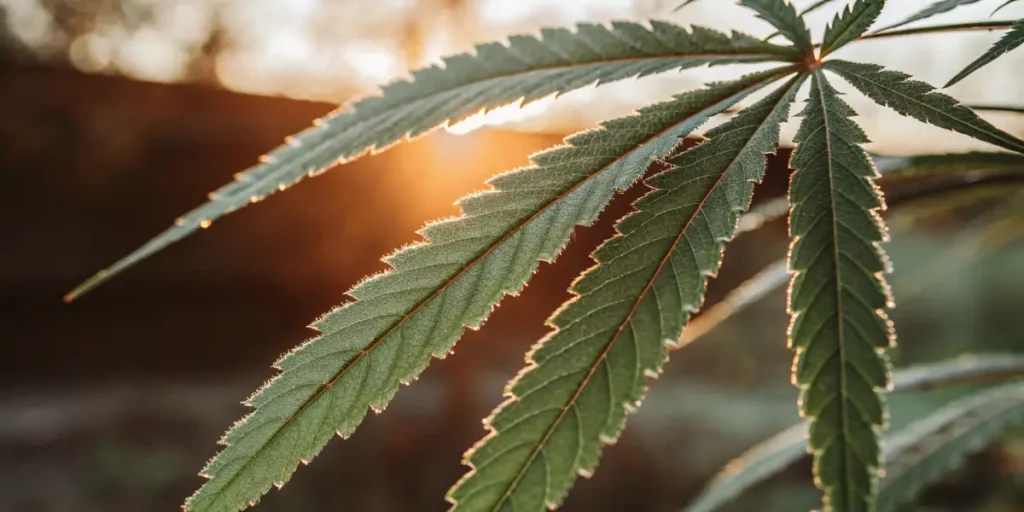
Blue Light’s Impact on Cannabis
Blue light, detected by cryptochromes, is crucial during the vegetative stage. Strains like Gorilla Glue 4 from Blimburn Seeds respond well to blue light, showing robust growth and resilience. It ensures stems are strong, supporting future heavy buds.
Growers can optimize blue light exposure by using LED lights designed to emit specific wavelengths. This practice is particularly beneficial for indoor growers aiming to replicate the sun’s natural spectrum indoors.
The glossary of cannabis light terminology emphasizes the strategic use of blue light to enhance plant architecture. By manipulating this spectrum, growers can cultivate plants that are not only healthier but also more resistant to environmental stresses, which is crucial for maintaining high-quality yields.
Cannabis photoreceptor function explained through the influence of blue light reveals a pathway to achieving compact, bushy plants ideal for indoor setups. Leveraging this knowledge, growers can maximize space and light resources, optimizing plant performance and overall productivity.
The Function of Light Spectrum
The light spectrum encompasses all wavelengths of light, each affecting cannabis differently. Full-spectrum lighting mimics natural sunlight, providing the red and blue light essential for growth and flowering.
Knowing cannabis light receptors and their interaction with the light spectrum can revolutionize your growing strategy. It’s about balancing the right amount of each light type throughout the plant’s life cycle.
The Glossary of Cannabis Photoreceptor Terms offers insights into how different wavelengths can be harnessed to influence plant behavior. By mastering the cannabis photoreceptor glossary terms, growers can create an environment that replicates natural lighting conditions, promoting optimal plant development.
Cannabis plant photoreceptor definitions shed light on the intricate dance between light and plant physiology. This knowledge allows for a more nuanced approach to light management, enabling growers to tailor their lighting strategies to meet the specific needs of their crops, ultimately enhancing both yield and quality.
Practical Spectrum Management
Growers can tailor light exposure to suit each growth phase. For example, during the vegetative stage, a focus on blue light encourages leaf and stem development. While transitioning to flowering, increasing red light can enhance bud production.
Strains like OG Kush from Blimburn Seeds benefit from full-spectrum lighting. It provides the necessary balance of red and blue light, ensuring optimal growth from seedling to harvest. This approach maximizes both yield and potency.
Glossary of cannabis light terminology guides growers through the complexities of spectrum management, offering strategies to fine-tune light environments. By understanding these cannabis photoreceptor glossary terms, cultivators can ensure each phase of growth is supported by the appropriate light conditions.
Investing in versatile lighting solutions that allow for adjustments in the light spectrum is key to successful cannabis cultivation. This flexibility empowers growers to respond dynamically to plant needs, ensuring that every growth stage is optimized for success, from germination to harvest.

FAQs
What are phytochromes in cannabis?
Phytochromes are light receptors sensitive to red and far-red light, acting as the plant’s internal clock. They help cannabis determine the right time to transition from vegetative growth to flowering. The glossary of cannabis photoreceptor terms often highlights their importance in managing light cycles.
In practical terms, adjusting the duration of light and darkness can manipulate phytochromes to induce flowering. This is especially useful for photoperiod strains that rely on specific light conditions to bloom.
Glossary of Cannabis Photoreceptor Terms emphasizes the critical role of phytochromes in synchronizing plant activities with environmental cues. By knowing these receptors, growers can refine their light schedules to match natural cycles, optimizing plant development.
Phytochromes, as explained in cannabis plant photoreceptor definitions, are essential for timing key growth transitions. This knowledge enables growers to anticipate and respond to plant needs, ensuring consistent and high-quality yields throughout the growing season.
How do cryptochromes affect cannabis growth?
Cryptochromes detect blue light, crucial for vegetative growth stages. They ensure cannabis plants develop strong stems and leaves, providing a solid foundation for future flowering. This receptor is less about flowering and more about establishing a healthy plant structure.
Growers can use LED lights with a high blue light output to enhance cryptochrome activity. This technique is particularly beneficial for indoor growing environments where natural sunlight is limited.
The Glossary of Cannabis Photoreceptor Terms details how cryptochromes influence the plant’s early growth phases, offering a blueprint for cultivating robust and resilient plants. By leveraging these cannabis photoreceptor glossary terms, growers can optimize light conditions to support vigorous vegetative growth.
Cryptochromes, as outlined in cannabis photoreceptor function explained, are pivotal for setting the stage for healthy plant development. Understanding their role allows growers to create environments that promote strong, healthy plants capable of supporting abundant flowering later in the growth cycle.
Why is the light spectrum important for cannabis?
The light spectrum includes all the wavelengths of light that impact cannabis growth differently. Red and blue light are the most influential, with each playing a unique role in the plant’s development and flowering stages.
Full-spectrum lighting provides a balanced mix of wavelengths, promoting healthy growth and robust flowering. This balance is crucial for maximizing yields and ensuring high-quality cannabis production.
The Glossary of Cannabis Photoreceptor Terms provides a detailed breakdown of how each part of the light spectrum affects cannabis growth. By mastering these cannabis photoreceptor glossary terms, growers can craft lighting strategies that meet the specific needs of their plants at every stage.
Knowing cannabis light receptors and their interaction with the light spectrum is key to unlocking the full potential of cannabis cultivation. This knowledge allows growers to tailor their lighting setups, ensuring that each plant receives the optimal spectrum for its growth phase, leading to superior yields and quality.
Can light manipulation improve cannabis yields?
Yes, manipulating light conditions can significantly enhance cannabis yields. By adjusting the light spectrum and duration, growers can influence the plant’s growth phases, encouraging either vegetative growth or flowering as needed.
This technique, informed by the glossary of cannabis photoreceptor terms, allows for precise control over the growing environment, leading to more consistent and higher-quality harvests.
Glossary of cannabis light terminology highlights the benefits of strategic light manipulation, offering growers a roadmap to optimizing plant performance. By knowing cannabis photoreceptor glossary terms, cultivators can work smarter, not harder, to achieve exceptional yields.
Mastering the art of light manipulation, as outlined in cannabis plant photoreceptor definitions, is a game-changer for growers seeking to maximize their returns. This approach ensures that every aspect of light exposure is optimized, resulting in healthier plants and more abundant harvests.
What strains benefit most from light spectrum management?
Strains like Bruce Banner 3, Gorilla Glue 4, and OG Kush from Blimburn Seeds thrive under well-managed light conditions. Each responds differently to the light spectrum, with some benefiting more from blue light during growth and others from red light during flowering.
Understanding each strain’s specific needs allows growers to tailor their light setups, ensuring optimal growth and maximizing potential yields. This customized approach is at the heart of successful cannabis cultivation.
The Glossary of Cannabis Photoreceptor Terms offers insights into how different strains respond to light spectrum adjustments, guiding growers in customizing their lighting strategies. By mastering these cannabis photoreceptor glossary terms, cultivators can unlock each strain’s full potential.
Knowing cannabis light receptors and their influence on different strains is essential for achieving peak performance. This knowledge empowers growers to make informed decisions about light management, ensuring that each strain receives the optimal spectrum for its unique growth requirements.


